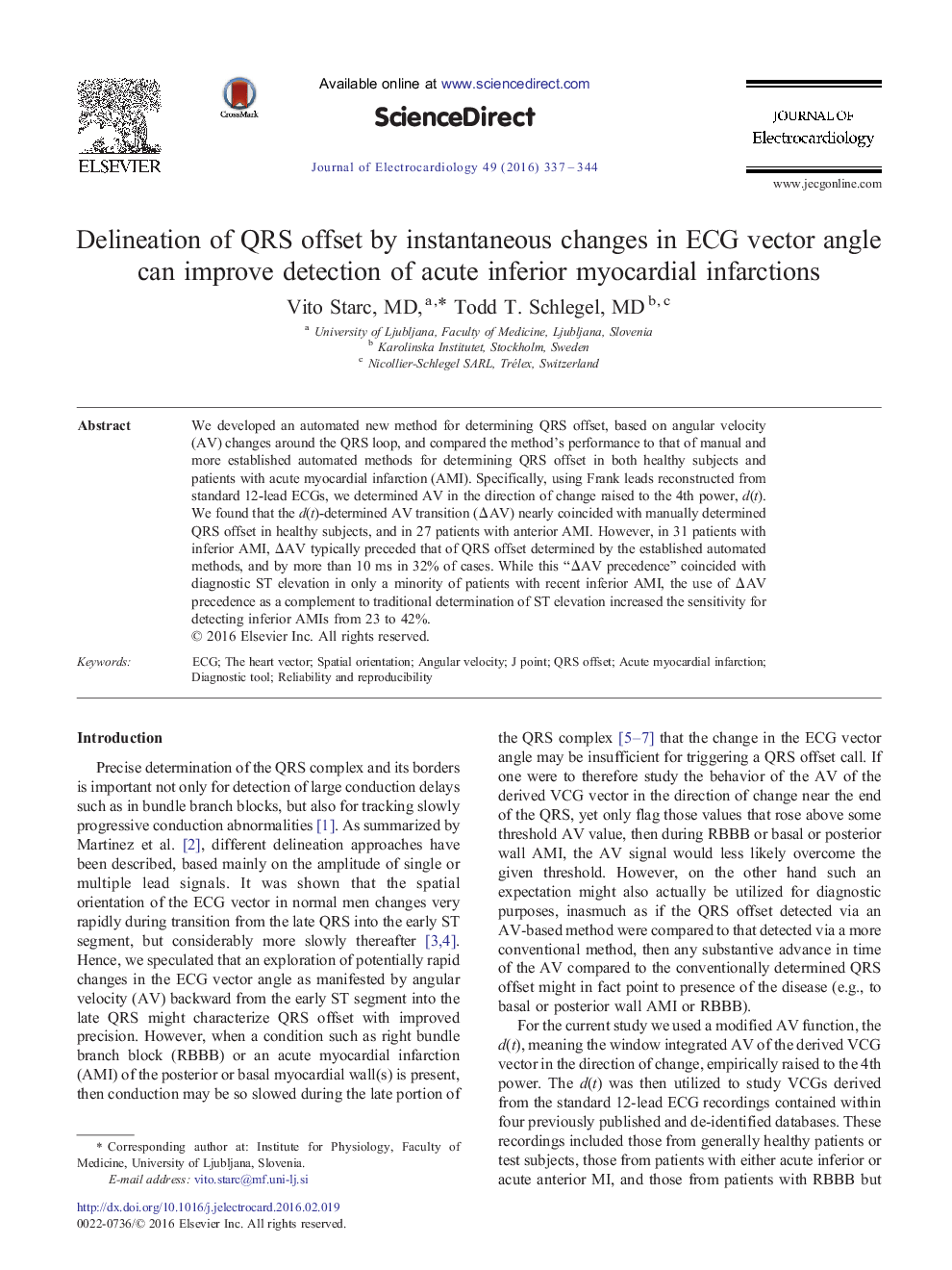| Article ID | Journal | Published Year | Pages | File Type |
|---|---|---|---|---|
| 5986194 | Journal of Electrocardiology | 2016 | 8 Pages |
â¢We developed a new method for QRS offset location based on angular velocity (AV) changes around the QRS loop.â¢The method was reliable and reproducible in healthy individuals.â¢QRS offset point preceded the J point by > 10 ms in 32% of patients with inferior AMI, but in only 4.6% of apparently healthy individuals.â¢QRS offset point precedence (ÎAV) coincided with diagnostic ST elevation in only a minority of patients with recent inferior AMI.â¢The use of ÎAV precedence as a complement to conventional determination of ST elevation increased the sensitivity for detecting inferior AMIs from 23 to 42%.
We developed an automated new method for determining QRS offset, based on angular velocity (AV) changes around the QRS loop, and compared the method's performance to that of manual and more established automated methods for determining QRS offset in both healthy subjects and patients with acute myocardial infarction (AMI). Specifically, using Frank leads reconstructed from standard 12-lead ECGs, we determined AV in the direction of change raised to the 4th power, d(t). We found that the d(t)-determined AV transition (ÎAV) nearly coincided with manually determined QRS offset in healthy subjects, and in 27 patients with anterior AMI. However, in 31 patients with inferior AMI, ÎAV typically preceded that of QRS offset determined by the established automated methods, and by more than 10Â ms in 32% of cases. While this “ÎAV precedence” coincided with diagnostic ST elevation in only a minority of patients with recent inferior AMI, the use of ÎAV precedence as a complement to traditional determination of ST elevation increased the sensitivity for detecting inferior AMIs from 23 to 42%.
Graphical abstractDownload high-res image (125KB)Download full-size image
